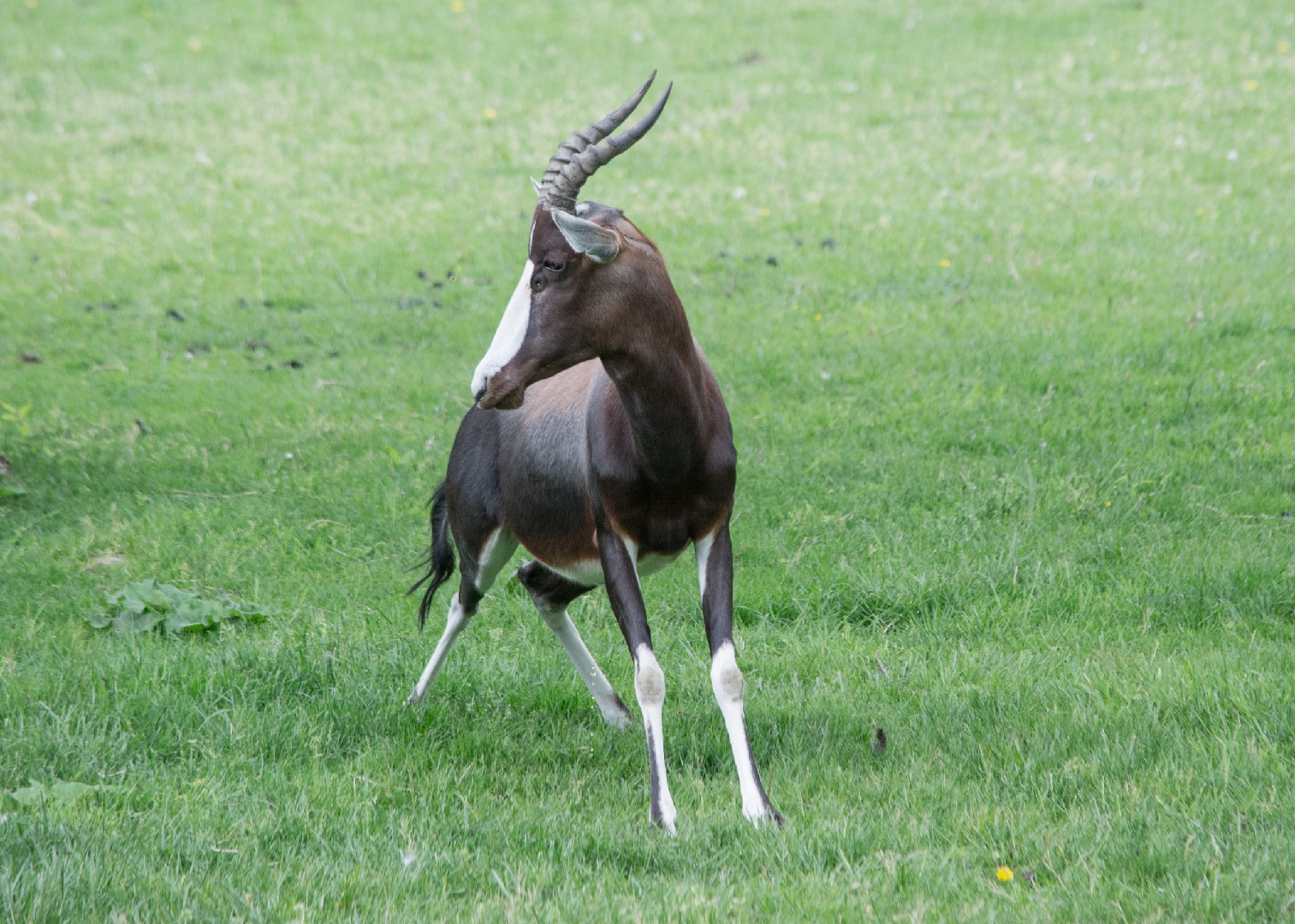Bontebok
A species of Tsessebes, Also known as Blesbuck Scientific name : Damaliscus pygargus Genus : Tsessebes
Bontebok, A species of Tsessebes
Also known as:
Blesbuck
Scientific name: Damaliscus pygargus
Genus: Tsessebes
Content
Description General Info
 Photo By Tim Evanson , used under CC-BY-SA-2.0 /Cropped and compressed from original
Photo By Tim Evanson , used under CC-BY-SA-2.0 /Cropped and compressed from original Description
The bontebok is a tall, medium-sized antelope. They typically stand 80 to 100 cm (31 to 39 in) high at the shoulder and measure 120 to 210 cm (47 to 83 in) along the head and body. The tail can range from 30 to 60 cm (12 to 24 in). Body mass can vary from 50 to 155 kg (110 to 342 lb). Males are slightly larger and noticeably heavier than females. The bontebok is a chocolate brown colour, with a white underside and a white stripe from the forehead to the tip of the nose, although there is a brown stripe across the white near the eyes in most blesbok. The bontebok also has a distinctive white patch around its tail (whence the Latin name), while this patch is light brown/tan in blesbok. The horns of bontebok are lyre-shaped and clearly ringed. They are found in both sexes and can reach a length of half a metre. 
General Info
Lifespan
17-20 years
Diet
The dietary habits of bontebok primarily revolve around grazing grasses. This animal exhibits selectivity, favoring short, green grass and herbaceous plants over dry, tall grasses, shaping its habitat and grazing patterns as per seasonal availability of its preferred diet.
Appearance
Bontebok is a medium-sized antelope with a streamlined, muscular body covered in short, glossy fur. Its dominant coloration varies from light brown to dark, almost black, with a distinctive white belly and rump. Males have lyre-shaped horns, while females are hornless. Subspecies may show variations in overall size and coloration.
Behavior
Bontebok is a gregarious species, living in large groups with structured hierarchy. Notably, they exhibit a pronounced day-night activity cycle, primarily grazing at dawn and dusk. Marking their territory through dung piles, these animals use a strategy of communal defecation to deter potential predators. Migration in large herds is critical for survival, enabling access to fresh pastures.
Population
Increasing